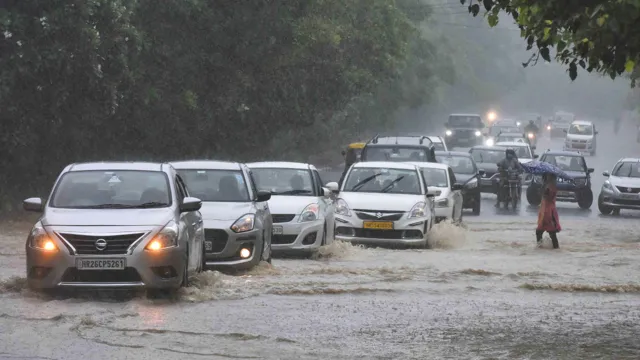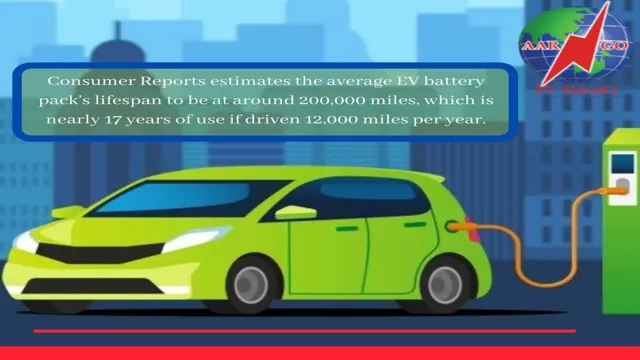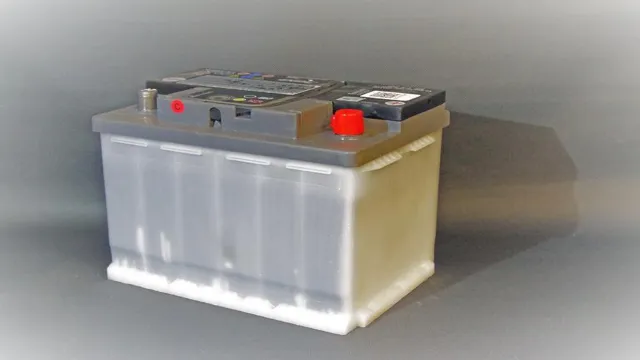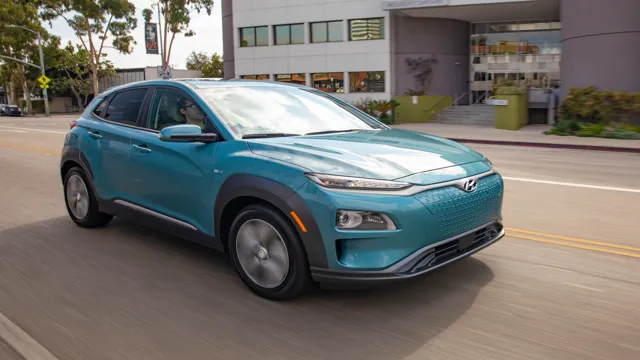Electric Vehicles in Floods: How to Prevent Battery Drain and Protect Your Investment
Have you ever encountered a situation where you got stuck in floodwater with your electric car? It can be a nightmare scenario, right? Not only can it damage your car, but it can also cause a lot of battery-related issues. The latest battery technology has improved electric cars’ water resistance capacity, but it doesn’t mean they are immune to being submerged in floodwater. In this blog post, we will discuss what happens to an electric car’s battery during floods and what you need to know to avoid further damage.
So, buckle up, and let’s dive into the details.
Understanding the Risks
One important thing to consider when owning an electric car is the risk of flooding. In the event of heavy rain or flooding, electric cars are at risk of battery drain. This is because the water can seep into the car’s electric components and cause disruptions.
This not only damages the battery, but also puts the car at risk of electrical failure. As a result, it is important to take precautions during extreme weather conditions, such as parking the car in a safe location or avoiding driving through flood-prone areas. Incorporating preventive measures in advance can save both the battery and the car, enabling the car to run smoothly for longer periods of time.
So, be mindful and take necessary measures to avoid any damage to your electric car’s battery, especially during flood-prone times.
How Water Can Affect Electric Car Batteries
Electric Car Batteries Electric car batteries are a critical component in the functioning of electric cars. As such, it’s essential to understand the risks associated with them. One such risk is water.
Water can have severe impacts on electric car batteries, particularly when it enters the battery cells. This can cause a short circuit and lead to a range of problems, such as the car not starting or the battery deteriorating quickly. Water can also lead to corrosion of the battery’s terminals, reducing their efficiency and lifespan.
To avoid such risks, it’s essential to keep the battery as dry as possible and avoid wet conditions, especially when charging the car. Regular maintenance of the battery, including cleaning and inspection, is also necessary to prevent water damage and ensure a longer lifespan for the battery.
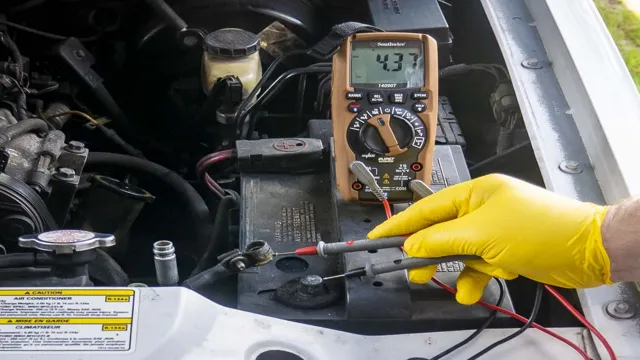
The Importance of Being Prepared
Being prepared is crucial when it comes to managing risks. Understanding the potential perils that can affect us allows us to plan and mitigate any possible negative outcomes. If we fail to prepare, we risk greater losses and consequences that could take longer to recover from.
Whether it’s in our personal lives or in business, being prepared for unforeseen circumstances can minimize risks and ensure that we can handle any situation that arises. This is especially true in times of crisis, where quick and decisive action is necessary. By understanding the risks and planning accordingly, we can be better equipped to handle emergencies and ensure a faster recovery.
So, don’t wait until it’s too late – take the necessary steps to be prepared today.
What to Do After the Flood
If your electric car has been through a flood, it’s important to take immediate action to prevent any battery damage or drain. The first step is to disconnect the battery and have it fully inspected by a professional. This will help determine if any water damage has occurred and if any repairs are necessary.
It’s also important to thoroughly dry out the interior of the car and check for any signs of water damage. If you notice any corrosion, it’s critical to remove it as soon as possible to prevent further damage. It’s also a good idea to have the car fully serviced to ensure that all systems are functioning properly.
While it may be tempting to take matters into your own hands, it’s essential to seek professional advice and assistance to prevent further damage and ensure that your electric car is safe to drive. Remember, your battery is the heart of your electric car, and it’s important to protect it at all costs to keep your car running smoothly.
Step-by-Step Guide to Safe Battery Preservation
“battery preservation after flood” After a flood, it’s essential to take precautions to keep your batteries safe, whether you’re dealing with car batteries or the ones in your electronics. First and foremost, it’s critical to disconnect all batteries that may have come in contact with floodwaters. Even if they appear unaffected, they may still be compromised and pose a risk.
Next, gently clean the battery terminals using a mixture of baking soda and water to neutralize any acids or other substances that may have built up on them. Dry the terminals and any other parts of the battery that may have gotten wet, taking care not to damage any wires or connectors in the process. Finally, store the batteries in a cool, dry place, preferably on a shelf or in a secure container to prevent accidental damage or exposure to moisture.
By following these steps, you can help preserve your batteries after a flood and prevent any damage or safety hazards down the line.
How to Check for Damage
When faced with flood damage in your home or business, it’s essential to act quickly to minimize the damage. After the water recedes, the first step is to check for damage. Start by inspecting all of the visible surfaces like floors, walls, and ceilings.
Look for any signs of bubbling or warping, as these can be indications of water damage. Also, take note of any musty smells, as these can indicate the presence of mold. Be sure to check any electronics and appliances that may have been affected by the water, as water damage can cause short circuits and pose a fire risk.
Checking for damage early can save you from costly repairs and potential health hazards down the line. Remember to stay safe when checking for damage and wear protective gear if necessary. By taking the time to check for damage after a flood, you can take the necessary steps to get your home or business back to normal.
When to Call a Professional
When it comes to dealing with flood damage in your home, it can be tempting to try to handle everything on your own. However, there are certain situations where you should definitely call in a professional. If the flood was large and caused significant damage to your home, it’s best to bring in a contractor who specializes in flood restoration.
They will have the equipment and expertise to properly handle the situation, from removing the water to drying out your belongings and repairing any structural damage. Additionally, if you’re not sure whether or not it’s safe to enter your home after a flood, it’s best to err on the side of caution and get professional help. Water damage can lead to mold growth and other health hazards if not properly addressed.
In the end, it’s always better to be safe than sorry, and hiring a professional can ensure that the damage is properly handled and your home is safe and habitable once again. So if you’ve experienced a flood, don’t hesitate to call in the experts to help you navigate the aftermath.
Prevention Tips for Electric Car Owners
If you own an electric car and live in an area prone to flooding, there are some important steps you should take to prevent battery drainage. First and foremost, avoid driving through flooded areas. Even if your electric car has a high ground clearance, water can still damage the sensitive electronics and cause a short circuit.
If your car does become submerged, do not attempt to start it or charge the battery until it has been thoroughly inspected by a professional. Another important prevention tip is to park your electric car on higher ground or in a garage during flood season. This will not only protect your battery but also prevent water damage to other parts of your car.
Lastly, be sure to check your car’s warranty and insurance coverage to ensure that flood damage is included. In the event that your battery does become damaged due to flooding, you want to have the proper coverage in place to avoid costly repairs or replacement. By taking these proactive measures, you can enjoy all the benefits of electric car ownership without having to worry about the negative effects of flooding on your battery.
How to Protect Your Car from Flooding
As an electric car owner, it’s important to take extra precautions to protect your vehicle from floods. One key prevention tip is to avoid parking in areas that are known to flood, such as low-lying or coastal areas. If you live in an area that is prone to flooding, consider investing in a portable flood barrier to protect your car.
Another important step is to regularly check and maintain your car’s waterproof seals and gaskets, ensuring that they are in good condition and properly sealed. In the event of a flood warning, it’s important to move your car to higher ground as quickly as possible. By taking these preventive measures, you can help ensure that your electric vehicle stays safe and protected during times of flooding.
Maintenance Practices to Extend Battery Life
Electric car owners can take certain important steps to maximize the lifespan of their vehicle’s battery and reduce the long-term cost of ownership. One important preventive maintenance practice is to avoid extreme temperatures and excessive sunlight exposure, as these can degrade battery performance and lifespan. Owners should also avoid fully discharging the battery frequently, opting instead to charge it up to around 80% capacity and keeping it between 20% and 80% charge whenever possible.
Another important tip is to use the car’s built-in battery management system and software, which can help optimize charging and prevent overcharging or undercharging. Regularly cleaning the battery and keeping the car up-to-date with software updates and maintenance checks can also ensure better long-term performance. Overall, by adopting these simple preventive measures, electric car owners can extend the lifespan of their batteries and enjoy better reliability and efficiency for years to come.
Conclusion: Stay Safe and Informed
Just like how a student’s motivation drains when faced with a tough exam, an electric car’s battery can also take a hit when faced with tough conditions like floods. But fear not, with the right precautions and smart driving habits, we can keep our electric cars charged and ready to roll. And who knows, maybe one day electric cars will be navigating through floods like they’re walking through rain puddles, making the phrase ‘battery drain’ a thing of the past.
“
FAQs
How does flooding affect the battery of an electric car?
Flooding can cause the battery pack in an electric car to drain quickly, resulting in shorter driving range and potentially damaging the battery. It is important to avoid driving through flooded roads or areas.
Is there any way to prevent battery drainage in an electric car during floods?
Yes, you can avoid driving through flooded areas, and if you must drive, try to maintain a slow and steady speed. You can also look for higher ground or alternate routes to avoid water altogether.
How can you protect your electric car’s battery in case of a flood?
If you know a flood is coming, you should move your electric car to higher ground, if possible. If you cannot move your car, disconnect the battery from the car to prevent any electrical damage.
Can water damage to an electric car be covered by insurance?
It depends on the type of coverage you have. Comprehensive insurance policies usually cover water damage to an electric car caused by floods or other natural disasters. However, it’s important to read your policy carefully and understand the terms and conditions.
